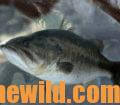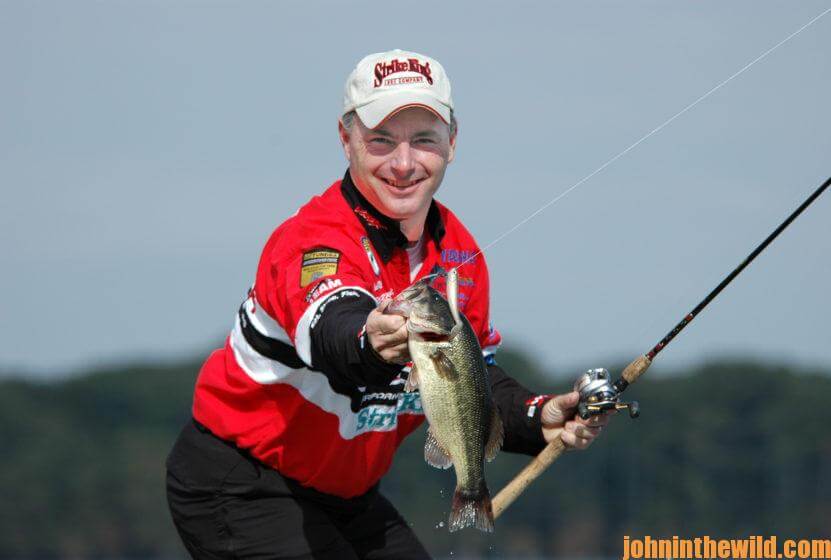Editor’s Note: Mark Menendez has been a bass pro for 29 years with earnings of over $1.25 million from fishing.(https://www.facebook.com/pg/Mark-Menendez-125601017892/about/?ref=page_internal)
Every time I get ready to go fishing in the spring, a cold front often hits, knocking the bass in the head. Many times it will happen the night before my fishing 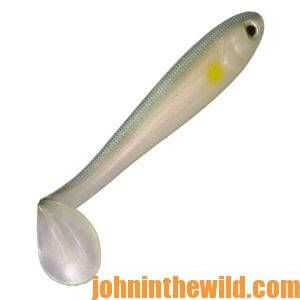 trip, but since plans already have been made, I have to go, regardless of weather conditions. You have two options when the area you’re fishing has a shad die-off, created by the cold weather and the muddy water. You either have to keep a lure right in the bass’s face for a long time, until the bass finally decides to take the bait, or you have to do just the opposite and make the bait come by the bass so fast or with such a strange action that the fish reacts to the bait and bites it out of instinct. I’ve really worked on learning how to get a reaction bite, because if you can get a bass to bite instinctively without thinking, then that fish doesn’t have to be hungry to eat your bait. A swimbait often helps me get that reaction bite. I’ve fished this lure on extremely-light line and been able to grind out a few of those reaction strike bites.
trip, but since plans already have been made, I have to go, regardless of weather conditions. You have two options when the area you’re fishing has a shad die-off, created by the cold weather and the muddy water. You either have to keep a lure right in the bass’s face for a long time, until the bass finally decides to take the bait, or you have to do just the opposite and make the bait come by the bass so fast or with such a strange action that the fish reacts to the bait and bites it out of instinct. I’ve really worked on learning how to get a reaction bite, because if you can get a bass to bite instinctively without thinking, then that fish doesn’t have to be hungry to eat your bait. A swimbait often helps me get that reaction bite. I’ve fished this lure on extremely-light line and been able to grind out a few of those reaction strike bites.
When a shad die-off occurs, or bass get lockjaw in the winter, I like to use a small swimbait. I’ll keep this bait high in the water column and attach it to a jighead. I’ll swim it in areas where I see the shad dying-off. You’ll occasionally get a bass that sees that swimbait swimming erratically and mistakes it for a live shad. I’ve found that most of the time the bass that will hit the smaller-sized swimbait during a die-off will be the bigger bass.
Editor’s Note: Mark Rose of Wynne, Arkansas, a pro fisherman for 21 years, has won over $2.72 million and fishes for fun, when he’s not tournament fishing.(https://www.facebook.com/pg/roseoutdoors/about/?ref=page_internal)
In January and February, the shad are dying-off in many lakes. When I’m fishing at this time of year, if I see shad dying, I go straight to that school of shad. I 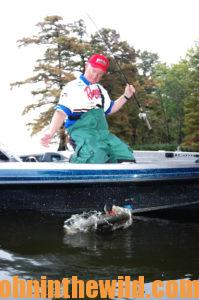 know the bass will be under the shad, feeding on them. I like to fish a swimbait and make it look like a wounded shad. You can see shad dying-off in the open parts of pockets or moving down the edges of retaining walls. If you’ll throw a swimbait out past the school of shad and make it look wounded by reeling it a little, stopping it and just barely making the tail move, you really can turn-on those bass under the dying shad to come up and take a swimbait.
know the bass will be under the shad, feeding on them. I like to fish a swimbait and make it look like a wounded shad. You can see shad dying-off in the open parts of pockets or moving down the edges of retaining walls. If you’ll throw a swimbait out past the school of shad and make it look wounded by reeling it a little, stopping it and just barely making the tail move, you really can turn-on those bass under the dying shad to come up and take a swimbait.
In the winter months, if a bass has to expend the same amount of energy to take a big bait as it does to take a little bait, often the bass will opt to take the bigger bait. I like white swimbaits in the winter because live shad get really pale in winter. I also like a white swimbait with either a gray or a black back.
During tournament season, I’ll be using a steady retrieve, however when I’m fishing in the winter for fun, I want to fish a very-slow, really-erratic, hardly-moving-at-all type of retrieve. I want the bait to move to look like a drunken man staggering down the street. I’ll fish the swimbait very slowly, with a little twitch next and then a pause. I’m trying to make this swimbait look wounded, sick and about to die.
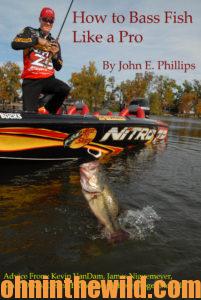 To learn more about bass fishing, check out John E. Phillips’ book, “How to Bass Fish Like a Pro” at http://amzn.to/YpoJvD and available in Kindle, print and Audible versions.
To learn more about bass fishing, check out John E. Phillips’ book, “How to Bass Fish Like a Pro” at http://amzn.to/YpoJvD and available in Kindle, print and Audible versions.
Tomorrow: Using Jerkbaits for Cold Weather Bass with Denny Brauer and Mark Davis

